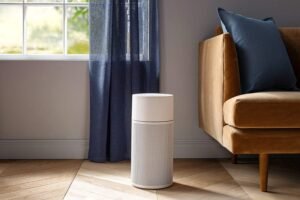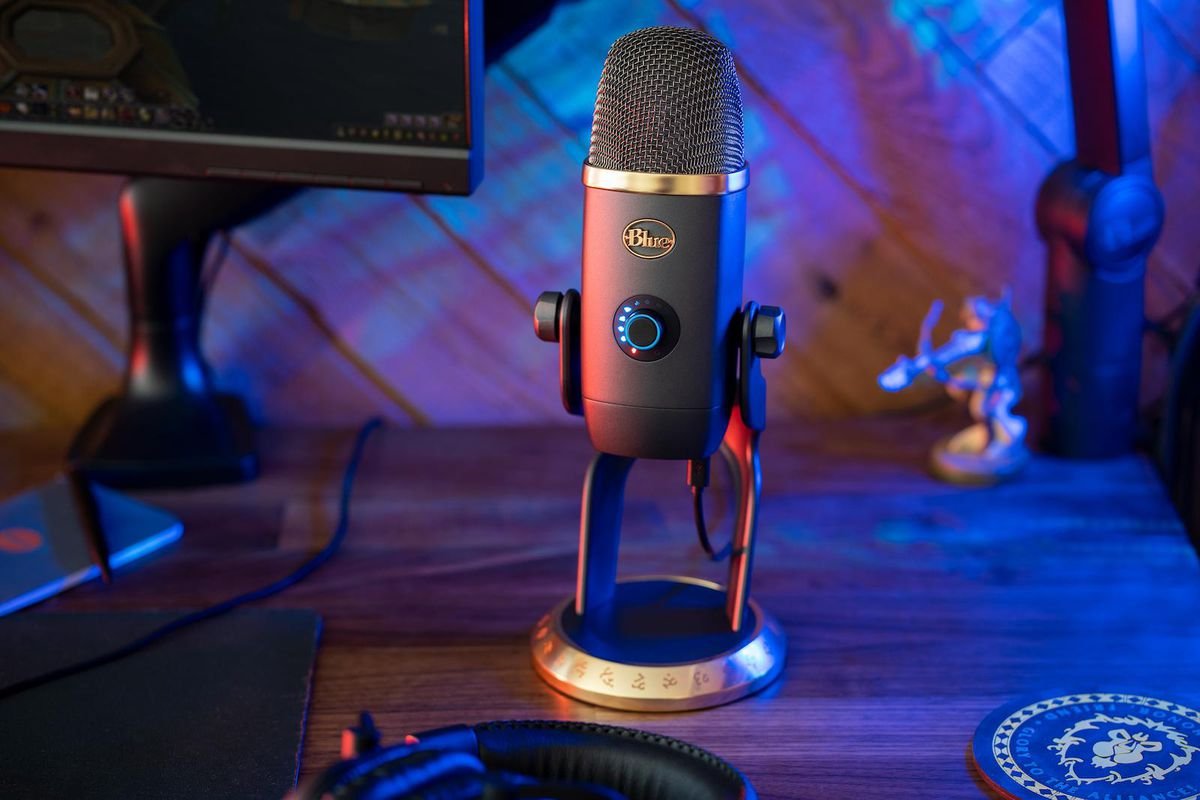
This is the review of the comparison between two microphones from the same brand and from the same series that is the Blue and from the yeti series. The comparison here is between the Blue Yeti Pro and the Blue Yeti X. There is around two-hundred and ten dollars difference in their price range currently, and also, the difference is there in their features and performances.
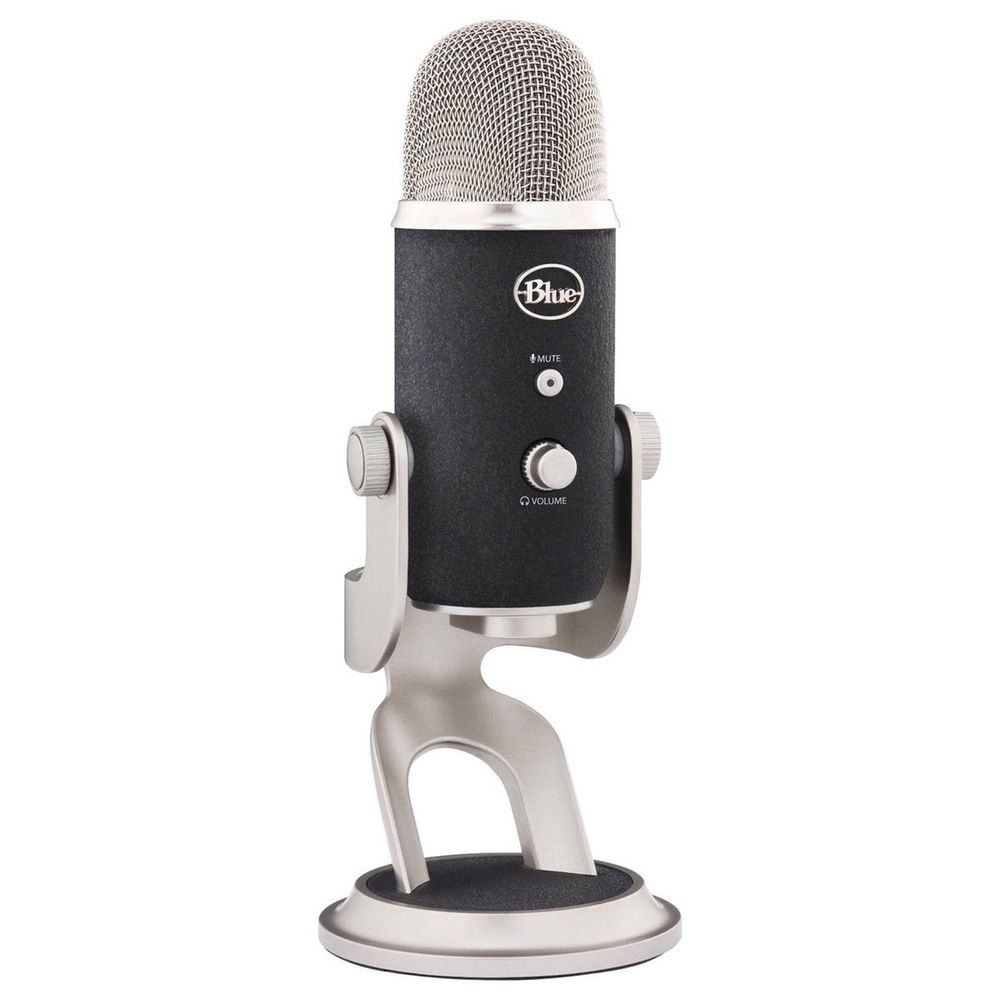 | 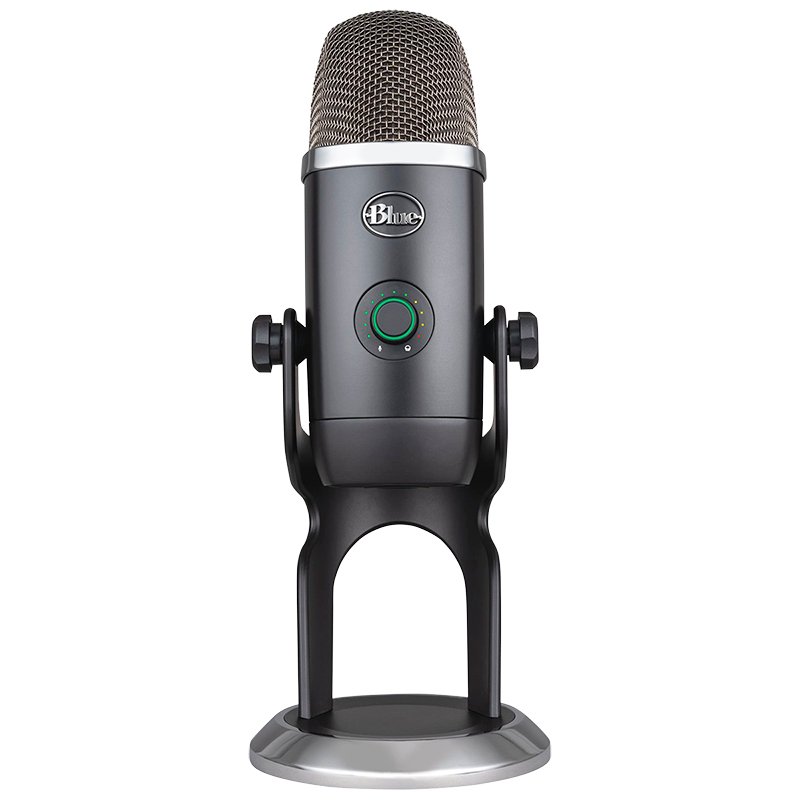 |
| Blue Yeti Pro | Blue Yeti X |
| BUY NOW | BUY NOW |
| PROS | PROS |
| Very good sound quality. Can be used as a standalone microphone with a mixer or as a USB microphone. Versatile. Sturdily built. | LED live metering. Excellent construction. Sleek Design Phenomenal sound quality. Recording software included. Simple Plug-And-Play Setup. |
| CONS | CONS |
| Can take a bit of setting up. Large and heavy so not very portable. Pricey for a USB mic. | No pop filter or adapter for a standard mic stand. Expensive. Dials feel a little loose and plastic. Attracts smudges. |
SPECIFICATIONS:
| HEADER | BLUE YETI PRO | BLUE YETI X |
| Brand | Blue Microphones | Blue Microphones |
| Product Line | Blue Microphones Yeti | Blue Microphones Yeti |
| Model | Pro | 988-000105 |
| GENERAL | BLUE YETI PRO | BLUE YETI X |
| Manufacturer | Logitech | Logitech |
| Recommended Use | Professional audio – recording | Professional USB Microphone for Gaming, Streaming and Podcasting. |
| MICROPHONE | BLUE YETI PRO | BLUE YETI X |
| Microphone Technology | electret condenser | condenser |
| Microphone Operation Mode | bi-directional, cardioid, omni-directional, stereo | cardioid / omni-directional / bi-directional (switchable), stereo |
| Sensitivity | ||
| Microphone Power Source Voultage (DC) | ||
| Frequency Response | 20 Hz | 20 Hz |
| Signal-To-Noise Ratio | 114 db | |
| Total Harmonic Distortion (THD) | 0.5% | |
| Max Sound Pressure | 120 db | 122 db |
| Audio Input Details | Cardioid / omni-directional / bi-directional (switchable) – 20 – 20000 Hz | |
| Connectivity Technology | Wired | Wired |
| AUDIO SYSTEM | BLUE YETI PRO | BLUE YETI X |
| Type | Microphone | Microphone |
| Recommended Use | Professional audio | computer |
| Specific Applications | Recording | broadcast, recording |
| Additional Functions | Amplifier | LED lights |
| Controls | Mute, volume | Gain, Mute, volume |
| DIMENSIONS & WEIGHT | BLUE YETI PRO | BLUE YETI X |
| Component | microphone stand | |
| Width | 4.7 in | 4.3 in |
| Depth | 4.9 in | 4.8 in |
| Height | 11.6 in | 11.4 in |
| Weight | 19.4 oz | 18.31 oz, 2.8 lbs |
| FEATURES | BLUE YETI PRO | BLUE YETI X |
| Features | Three custom condenser capsules and four different polar pattern settings: Cardioid, Stereo, Bidirectional and Omnidirectional. Cutting-edge A-D converter chip and separate analog circuit path for use with professional studio mixers and preamps. Built-in headphone amplifier for zero-latency monitoring, and direct controls for headphone volume, pattern selection, mute, and microphone gain. 15Hz – 22KHz frequency response. 192KHz/24 bit Sample / Word. | Custom four-capsule condenser array for greater focus and clarity High-res LED meter helps you visualize your voice level Multi-function smart knob controls headphone volume, mic gain, blend and mute Blue voice broadcast vocal effects including pro streaming and podcasting presets Customizable lighting for personalizing your mic Logitech G HUB integration for deeper control of microphone settings Four versatile pickup patterns: cardioid, omni, bi-directional and stereo Plug ‘n play on Mac and PC |
Detail Review:
INTRODUCTION:
Blue Yeti Pro
The Blue Yeti Pro is retailing for around three hundred and eighty dollars, and that makes it one of the most expensive plug and play USB microphones on the market. What makes this microphone very special is that it gets connected by both the USB and the XLR. This microphone also comes with four polar patterns such as the cardioid, the stereo, the omnidirectional, and the bi-directional.
Blue Yeti X
The Blue Yeti X is retailing for around a hundred and seventy dollars and this price range is definitely not among the higher price range compared to the BLue Yeti Pro. This microphone is a USB microphone so its just a plug and play system. This microphone also has four polar patterns such as the cardioid, the stereo, the omnidirectional, and the bidirectional.
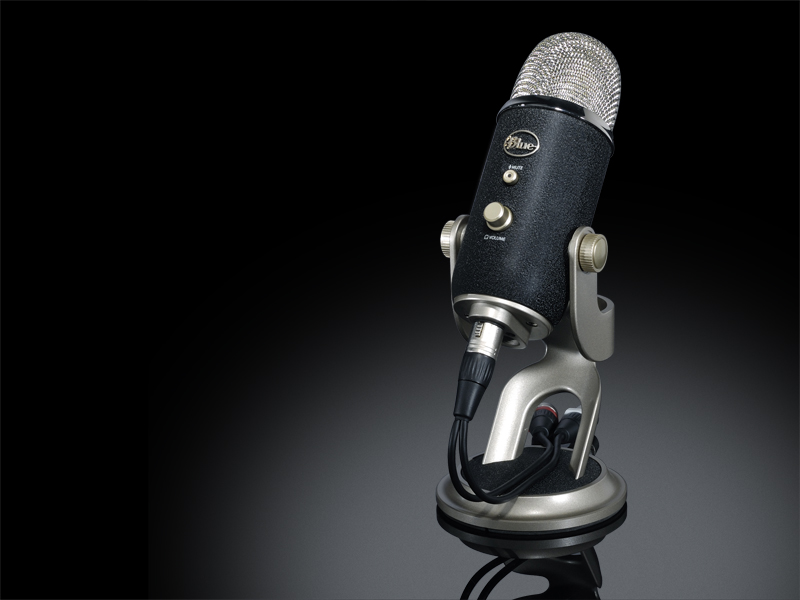
DESIGN:
Blue Yeti Pro
You will find a mute button on the front, the mute button is awesome because you don’t have to go to your mixing board or you don’t have to go to your computer, you just hit the mute and you’re ready to go. There’s also a volume knob, this is to control the headphone volume it does support headphones, which is awesome because it has zero-latency monitoring which is very handy.
On the back, you’re going to find a couple of different settings, first is a gain setting, it is digital-only, there is no analog gain on this mic which again is kind of annoying having to walk over to your mixing board or having to have someone present at the board to deal with gain and volume levels. Then you have your polar pattern selector, there are four patterns on this microphone.
On the bottom of the microphone is where you have got your USB port. You also have a microphone mount threading there on the bottom. It’s just standard size for any mic stand. Also, on the bottom of the mic, you have your five-pin XLR. There is also your 3.5-millimeter headphone jack for monitoring the microphone as well as receiving the output from your computer.
Blue Yeti X
As far as the build quality, I really don’t have any complaints about this microphone. It has an all-metal body as well as a metal mesh grille, which does have a tiny bit of giving to it. On the front of the microphone, you will find a single multi-purpose dial to control the gain, the headphone dial, and the blend between the microphone and the computer playback. To switch between these all you have to do is hold down the button for one second to switch from gain to headphone volume, and hold it down for another second to switch from headphone volume to the blend mode. This dial is also a button, so you’re able to press it down to mute or unmute your microphone, and around the dial, you will find a real-time meter, so you know what kind of levels you’re getting or if you’re clipping.
On the back of the microphone, you will find a single button to switch between the polar patterns, which are stereo, omnidirectional, cardioid, or bi-directional. On the bottom of the microphone, you’ll find a 5/8 inch threading, so you can mount this to a standard microphone stand. Unfortunately, it does not come with a 5/8 to 3/8 inch adapter, so you will need to provide your own if you want to put this on a boom arm. There is a 3.5-millimeter headphone port, which does offer latency-free monitoring as well as computer playback, and you’ll find the USB port to connect this to your computer.
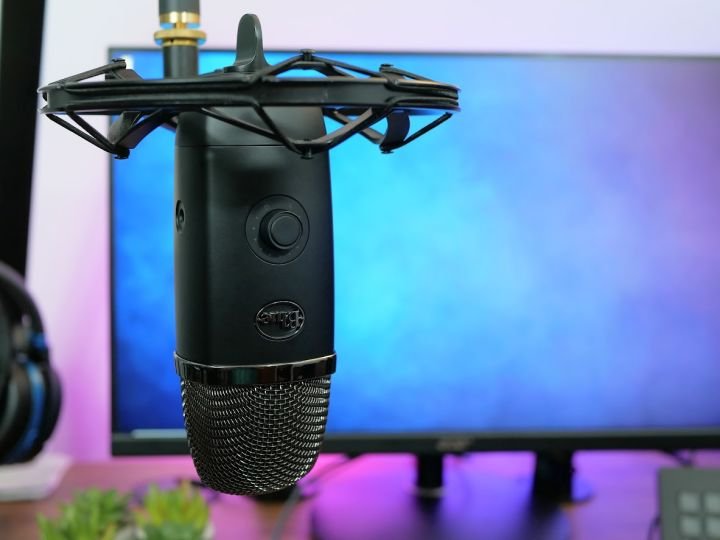
FEATURES:
Blue Yeti Pro
In the box, you are going to get a manual and the manual is pretty darn extensive, it doesn’t only explain really how to set up your microphone but also, how to record and in what sequences, and what really settings you want to set your stuff up for. For example, if you’re recording drums you should use a particular set up, for vocals a particular set up, and it’s pretty darn handy. You’re also going to get a 6 foot long USB cable, which is very nice, and you’re going to get a 5 pin XLR to left and right 3 pin XLR. For example, this is a stereo microphone you plug this into the bottom of the mic, and you will get a left and right channel out which you can then mix into stereo.
When you use XLR, you will get a better sampling rate than just going by a plain USB. Also, this is one of the main reasons you want to get the Yeti Pro over the original Yeti, and the other main reason is the sampling rate. In this microphone, the sampling rate is 192 kilohertz which is more compared to the original Yeti. So, it is pretty substantially better and even though it uses the same capsules this will capture better sound quality. This microphone is actually quite large, it measures about six inches tall, and with this stand, it’s probably close to five pounds, it’s pretty darn heavy. The microphone itself is a cardioid condenser microphone.
We have four polar patterns in this microphone amongst which stereo is very good for recording, vocals, and instruments. When we move it to omnidirectional, this is a 360-degree polar pattern which means we can capture everything around which is awesome, it’s great for recording the whole band’s. It doesn’t produce the greatest sound quality but it works for capturing whole bands, it works great for orchestras, field recordings, conference halls, that kind of stuff where you need to capture the whole environment.
The next one is cardioid in which the microphone will pick up the sound in a heart pattern. The reason why I like this is that it’s very distinguished, and you get the best sound quality. This is great for podcasting, voiceovers, vocals, instrumentation, and all that other stuff. The last polar pattern would be bi-directional which will capture the sound from the front and the back which is great for vocal, duets, again instrumentation, and interviews, where one person is on each side of the mic.
Blue Yeti X
In the box, you are going to get the microphone, you get the desktop mount which is already installed, you’ll get the USB cable, and a small amount of documentation meaning a Quick Start Guide. As far as the specs the microphone has a cardioid, omnidirectional, bi-directional, and stereo polar pattern. The frequency response of 20 Hertz to 20 kilohertz, a max SPL of 122 decibels, a bit depth of 24-bit, a sampling rate of 48 kilohertz, and it is compatible with both Windows and Mac but only compatible with Windows if you want to use the Blue voice functionality.
When you open up the Logitech G-hub software, you are able to adjust your Yeti X gain as well as the polar pattern, you can also adjust the color of the lighting in case you want to match your setup, or in case you’re color blind like me and want a few different colors so you’re better able to see it. You’re also able to adjust these settings for the headphone output, you can do some EQ to it for the computer playback as well as adjust the volume and the mix between the microphone and the PC. The main thing that’s cool here is the Blue voice software, which allows you to add effects in real-time from EQ to high-pass, – De-Essing, noise reduction, compressor expander, and even a limiter.
One issue I have with all of these presets, the gain out of the box is way too high, I imagine a lot of people are just gonna click the preset and go. Even when I drop the gain down to 25% I am clipping or getting close to clipping, I found that I need to have it down around 11 or 15 in that area. I’m guessing the reason they do that is they expect people to have the microphone really far away from them. But what I would recommend is getting the microphone closer to your mouth, and decreasing the gain because the presets are just set way too high.
Something else that’s really good about this software is that it does allow you a lot of granular control over each of the effects. So, if you were to click on the three-dot menu, you’re able to adjust the attack and ratio of your De-Esser as well as the threshold and the frequency, and it also shows you the amount of gain reduction that is occurring with the De-Esser. Then if we do the same thing with the compressor, we can do the attack release, threshold, and the ratio which is twelve to one that’s really high. The same thing with the expander or the gate, to the limiter, and the noise reduction, and that’s pretty much all there is to this.
In terms of pros, I think it is great that they have upgraded the microphone to be 24-bit 48 kilohertz I also really like the zero-latency monitoring on this thing. It’s also awesome that you can control all of the settings directly from the microphone excluding all of the Blue voice plugins, and it is a pretty full package microphone if you are just looking to get off the ground.
As far as cons, I find the multifunction button on the front of the microphone to be a little bit annoying, when you have to hold it for a second to switch to the next option, then hold for another second to move back to the next option, then hold it for another second to go back to the beginning. Another con is the placement of the polar pattern selection switch because when you are grabbing the microphone to move it around, it makes it incredibly easy to unintentionally press that button, and end up on a polar pattern that you don’t want to be on. The prior or classic Yeti had a dial, that you would have to turn to make it much more difficult to unintentionally switch between patterns. Also, I hate the fact that the Blue voice software is only available on Windows right now.
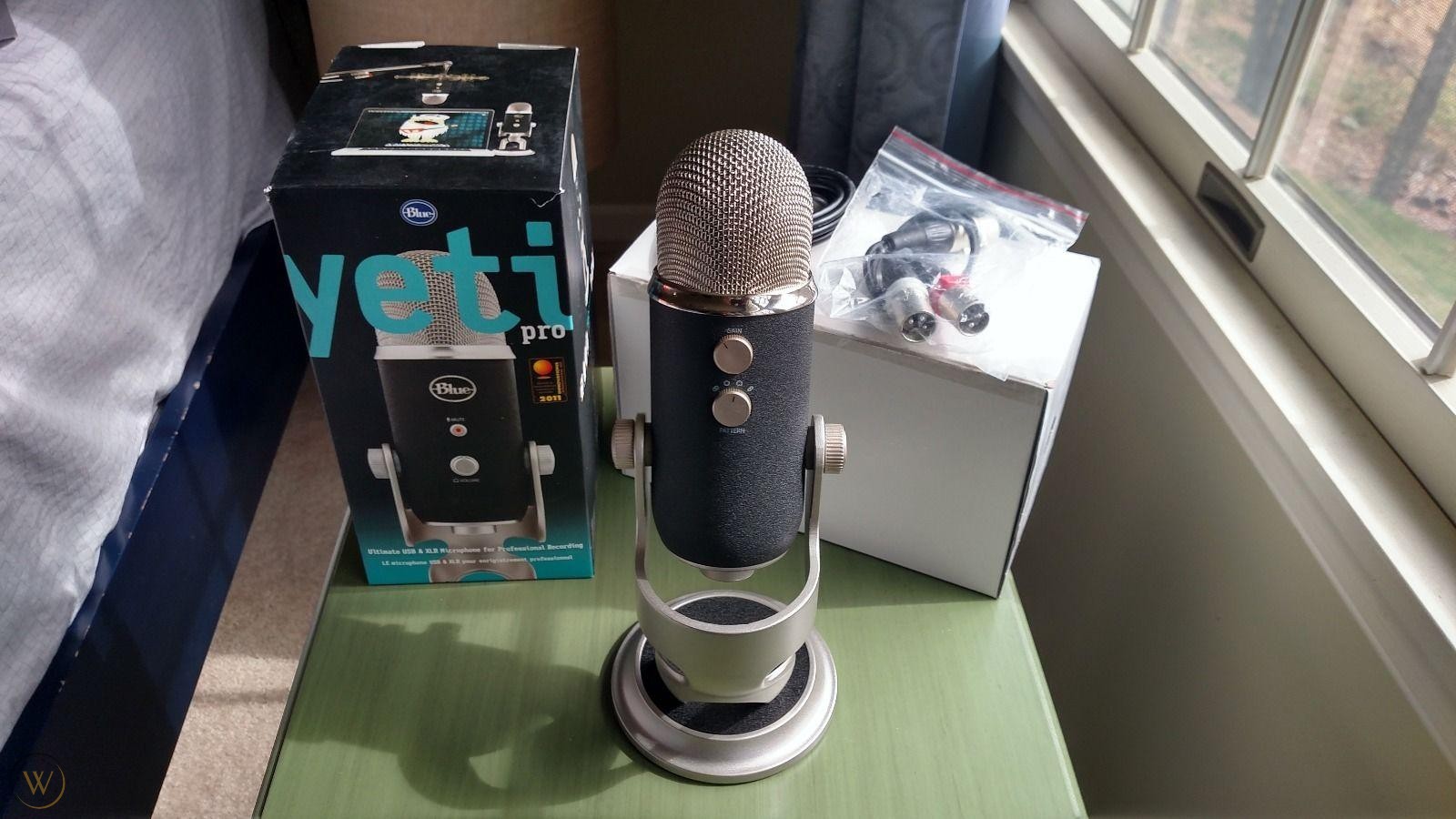
PERFORMANCE:
Blue Yeti Pro
With a regular microphone, you see on stage or a dynamic microphone that’s used oftentimes for vocals, and the distance in which you hold the microphone to your face determines the proximity, and proximity allows the lower frequency ranges. With condenser microphones, usually, you just get very crisp mids and troubles, and the bass is somewhat lackluster, and that holds true here on the Yeti Pro as well.
There’s not a lot of basses but the bass that is there is not muddy, it’s not distorted, and it’s actually really fast. That’s one of the biggest problems I’ve seen in microphones in this price range like the Audio-Technica AT2020, the bass is just too darn slow, and it doesn’t provide a lot of cohesion with the track. Luckily, that is not present with the Yeti Pro and has been one of my favorite things about it.
Blue Yeti X
As far as the performance, on the electric guitar, it is not the best sound I have ever heard but it is pretty usable, I found it to be a little bit boxy sounding but that would be easily solvable with a little bit of an EQ and post to cut out some of those lower frequencies. Then on the acoustic guitar, I thought the figure-8 polar pattern sounded really nice in terms of tone but when I threw on the stereo set, it just brought the guitar to life, and it made stereo miking the guitar incredibly easy compared to getting a stereo bar getting a microphone, or a couple of microphones and miking it up and getting all the angles right, so it’s really good sound out of it on this stereo setting.
Then for singing, I really wasn’t too keen on the tone of the cardioid polar pattern, it just sounded a little bit too gritty in the top-end but when I threw on the figure-8 setting, it really smoothed out some of those grittier tones, and made it a lot smoother sounding. But if you’re recording in a more open less treated room using that figure-8 polar pattern will introduce a lot of additional room noise. Lastly, for spoken-word, I think it does offer a very crisp and clear sound making your recording very intelligible but at the same time, those upper frequencies are a little bit too gritty from my liking, and maybe even a little bit over boosted.
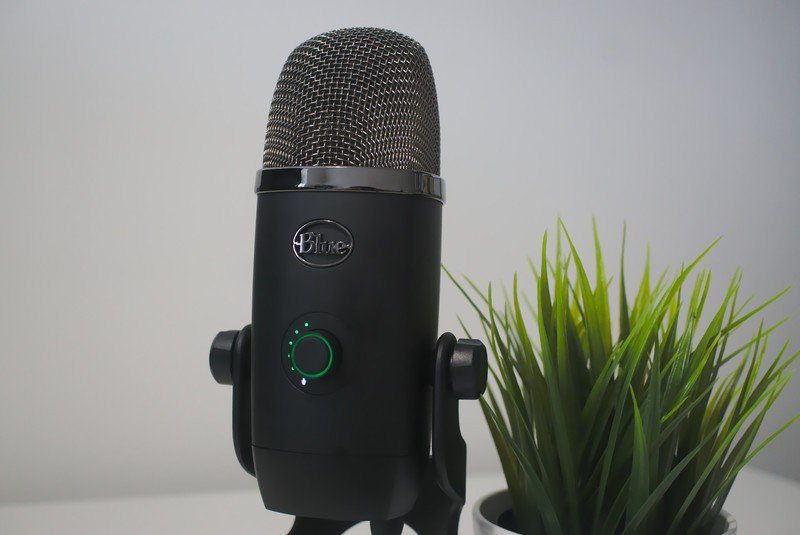
WHICH ONE IS GOOD FOR YOU?
I think the Blue Yeti X is a great microphone at a lower price compared to the Blue Yeti Pro for home studio musicians who just want to get started with recording because it is a relatively simple microphone, it gives you a lot of options to play with, and it makes stereo miking stuff incredibly easy. You can just throw this on the stereo mode in front of an acoustic guitar and you’re gonna get a pretty great sound. I would also recommend it for people who are desperate for that live processing but want it at a relatively cheap price point because as you start to get into live real-time processing it can get very expensive very quickly.
If you need a XLR supporting microphone and if you can afford more than three-hundred and fifty dollars for your microphone, then you can go for the Blue Yeti Pro and also, it sounds really good for the price. It will be great for those, who want to do their podcasting in a higher level.
Expert Reviews of Blue Yeti Pro:
By Trusted Reviews
The Blue Yeti Pro is definitely a bit pricey for hobbyists, but if you’re seriously into your home recording or your small media business is looking to get the best audio for its…By Musicrepo
For many, this is the ultimate USB microphone. It costs more, but its sheer versatility and high recording quality make it a good investment. My only criticism, really, is the size…By Engadget
Like all Blue products, the Yeti Pro is a looker. While attached to the included stand, it looms at almost a foot tall. Handsome textured black and silver metal encloses the…By Mixdown
Ideal for beginners and advanced users alike, the Yeti Pro Studio is a microphone that will continue to deliver results as your needs develop. Yes, it doesn’t lend itself to use with standard suspension mounts, so it…By thenextweb.com
The Yeti Pro is also capable of exponentially higher bitrate recordings than the original Yeti. You can crank that sample rate all the way up to 192 kHz, instead of 48 kHz like the original Yeti. If you’re not familiar…Expert Reviews of Blue Yeti X:
By PCmag
Like most Blue microphones, the Yeti X is first and foremost a DSP-free mic, so you’re getting a pure signal with no EQ or compression. If you prefer to record with DSP presets, consider the aforementioned $200 Shure MV51. BlueVoice software does, in a way, provide..By venturebeat
The Blue Yeti X USB microphone is so good it is making me consider dropping my XLR setup. XLR has the potential to sound far better than USB, but the Yeti X is beyond “good enough” with the Blue Voice processing. And USB is so much cleaner and simpler. If you are a part-time creator on Twitch or YouTube, the Yeti X is…By Laptop
The Blue Yeti X is an excellent microphone. It sports a sleek design outfitted with colorful and customizable LEDs. On the inside, you have a solid, four-capsule-condenser array backed by…By IGN
Even with the extra premium over the cost of the original Yeti, the Yeti X is an outstanding microphone that could easily become the new icon for streamers. I love the streamlined design but it’s the excellent and superbly customizable vocal capture that seals the deal. The Yeti X…By GEEKDAD
Blue says its award-winning microphone is ideal for gaming, streaming, and podcasting. My use was pretty pedestrian—video voiceovers in iMovie—but the results are night and day better than anything…




